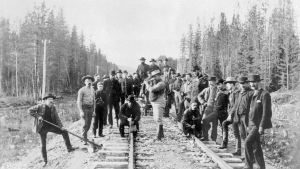During a recent panel, energy leaders from across North America provided some insight on the energy transition, the path to a net-zero future and the challenges and opportunities that exist.
The webinar, Tackling the Energy Trilemma — A Clarion Call, brought the leaders together to discuss the findings of GHD’s SHOCKED research. According to the report, the energy sector is currently battling three shocks: security, climate and society.
Carl Landry, managing director of investments with the Canada Infrastructure Bank, said he works with large project developers who are trying to build what can only be described as mega facilities.
“There is no small project in decarbonization, they’re all large,” Landry said. “I think if you’re looking at the policy and regulatory landscape right now it’s generally positive.
“There have been a number of initiatives launched particularly with the OECD (Organisation for Economic Co-operation and Development) countries that are very constructive and very supportive of energy transition opportunities.
“The big one would be the U.S. Inflation Reduction Act that came up last fall. I would call that almost seismic in terms of its scope, scale and potential, that the U.S. government has laid out for a significant energy transition across a couple of different vectors.”
In Canada, investment tax credits have been expanded to include things like clean power and hydrogen.
Although there are a lot of government announcements and policy support, what is needed is quick implementation of those policies, clarification on what they mean and how they will be utilized, Landry said.
“The ability to go out into the market and build them into your financial model and take them to the private sector, so the debt and equity markets can evaluate those policy conditions. Allow the whole capital stack to start to come together quicker so that people can begin to mobilize the people and the infrastructure needed to build these facilities,” he explained.
“I think if we can get those things enabled quickly…you will have the private sector move to be focused on the engineering and financing piece of the whole energy transition complex. That is a big undertaking in and of itself once the enabling regulatory and policy conditions are in place.”
SHOCKED also talks about the need for a system that is “connected but not dependent.”
Robby Sohi, COO and vice-president of markets and reliability with the Independent Electricity System Operator, said there’s no question Canada has to be able to balance reliability, sustainability and affordability. Having interconnected grids is a great way to help transition in an orderly manner.
“History has shown us that diversification in our systems has served us really well,” he said.
“You think about the generation sources that we have today and the transition that is about to happen, and really think in context of interconnected grids because that will provide value to us.
“We have an interconnected grid that actually gives us a whole bunch of flexibility in terms of outage management that also actually gives us resiliency.”
Maria Lehman, US Infrastructure Lead with GHD and vice-chair of the National Infrastructure Advisory Council (NIAC), said it needs to go one step further.
“We need a smart grid and the storage attached to it so we have several layers of resilience built into the system,” she said, adding she was appointed to NIAC last September. “This is a group of C suite individuals from the private side that were asked to serve by President Joe Biden.
“We agreed on three areas of study…The first thing we tackled was cross sector collaboration to protect critical infrastructure, so it was barriers currently and recommendations for improvements.”
The panel also spoke to supply chain and labour challenges.
“From a decarbonization perspective there is a lot of work coming our way. The speed of transition and the amount of work that’s required, it is monumental,” said Sohi.
“This is a global phenomenon so we’re not going to be able to change some of these things, but what we can change is our response to how we actually do things…Make sure you give yourself enough time to execute work and then hopefully some of the regulatory reforms.
“If we can get some traction on those it will speed things up, it will help us from a do-ability perspective.”
Working with the local community to make it a project that benefits everyone is also important.
“A lot of times people come in and they want to build a project and they think they know what’s best for the local community without really asking them and then that doesn’t really lead to good results,” explained Alicia Eastman, president of InterContinental Energy.
“In every location it’s different things that different people want but the main thing is that you have a conversation and you look to them as partners who can help you to make the project better not as an obstacle that you need to check off.”
Follow the author on Twitter @DCN_Angela.






Recent Comments